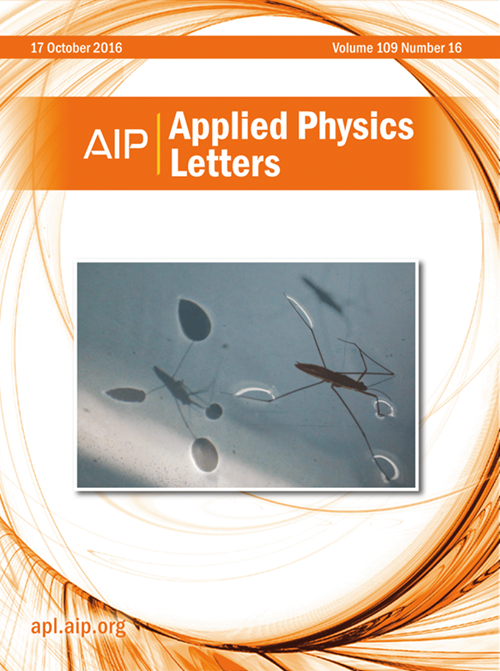Field- and frequency-tunable magnon–phonon resonances in arrays of ferromagnetic nanostripes
IF 3.5
2区 物理与天体物理
Q2 PHYSICS, APPLIED
引用次数: 0
Abstract
The coupling of lattice and magnetization dynamics is a topic of growing interest, with significant implications for novel solid-state technologies. In this work, we investigate arrays of ferromagnetic Fe/Permalloy nanostripes. A time-resolved optical approach enables the study of magnonic and phononic excitations, as well as their coupling at mode crossings. The field-dependent frequencies were also measured using Brillouin light scattering spectroscopy and corroborated by micromagnetic simulations for different in-plane directions of an external magnetic field. We find that the acoustic and magnonic excitations can be tuned in frequency and magnetic field by adjusting the array periodicity, filling ratio, as well as the orientation of the nanostripes relative to the external field. Additionally, we discuss the presence of features in the signal intensity at the magnon–phonon crossings, introduced by dynamical phase effects due to the impulsive coherent excitation.铁磁纳米条纹阵列中磁场和频率可调的磁子-声子共振
晶格和磁化动力学的耦合是一个越来越受关注的话题,对新型固态技术具有重要意义。在这项工作中,我们研究了铁磁性铁/坡莫合金纳米条纹阵列。时间分辨光学方法使研究磁振子和声子激励,以及它们在模式交叉处的耦合成为可能。利用布里渊光散射光谱测量了场相关频率,并通过微磁模拟证实了不同方向的外磁场。我们发现,通过调整阵列的周期性、填充率以及纳米条纹相对于外场的方向,可以在频率和磁场中调谐声和磁激励。此外,我们还讨论了磁振子-声子交叉处信号强度的特征,这些特征是由脉冲相干激励引起的动态相位效应引入的。
本文章由计算机程序翻译,如有差异,请以英文原文为准。
求助全文
约1分钟内获得全文
求助全文
来源期刊

Applied Physics Letters
物理-物理:应用
CiteScore
6.40
自引率
10.00%
发文量
1821
审稿时长
1.6 months
期刊介绍:
Applied Physics Letters (APL) features concise, up-to-date reports on significant new findings in applied physics. Emphasizing rapid dissemination of key data and new physical insights, APL offers prompt publication of new experimental and theoretical papers reporting applications of physics phenomena to all branches of science, engineering, and modern technology.
In addition to regular articles, the journal also publishes invited Fast Track, Perspectives, and in-depth Editorials which report on cutting-edge areas in applied physics.
APL Perspectives are forward-looking invited letters which highlight recent developments or discoveries. Emphasis is placed on very recent developments, potentially disruptive technologies, open questions and possible solutions. They also include a mini-roadmap detailing where the community should direct efforts in order for the phenomena to be viable for application and the challenges associated with meeting that performance threshold. Perspectives are characterized by personal viewpoints and opinions of recognized experts in the field.
Fast Track articles are invited original research articles that report results that are particularly novel and important or provide a significant advancement in an emerging field. Because of the urgency and scientific importance of the work, the peer review process is accelerated. If, during the review process, it becomes apparent that the paper does not meet the Fast Track criterion, it is returned to a normal track.
 求助内容:
求助内容: 应助结果提醒方式:
应助结果提醒方式:


